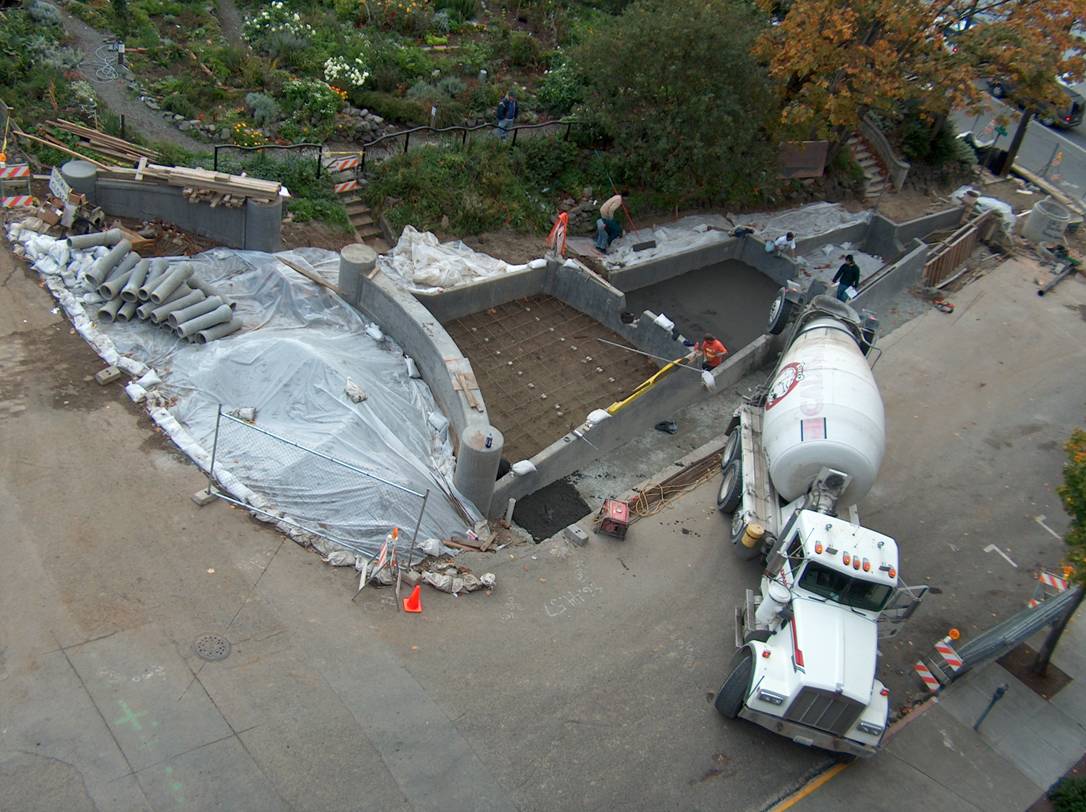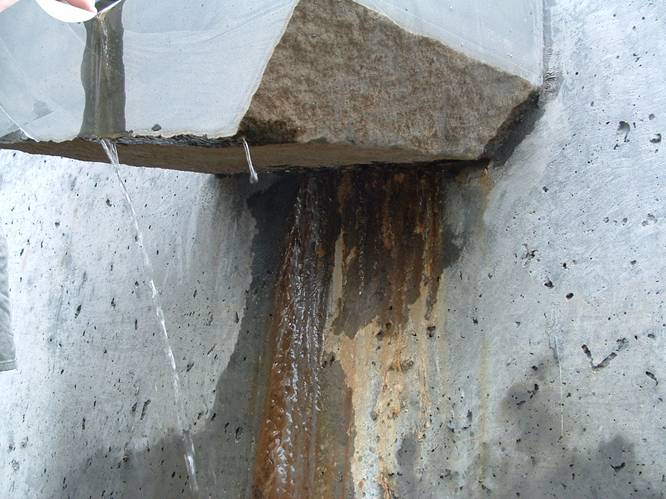

Project Funding The Cistern Steps cost approximately $482,000 to construct. Money for construction came from a combination of private donations, grants from WaterWorks, and matching grants from the Seattle Department of Neighborhoods. The detention cistern in the Vine Building was donated by Intracorp, the property developer, at a cost of $30,000. Neighborhood volunteers have donated countless hours of labor to complete the project as well.
Adjusting the Project Concept The design shown in the Growing Vine Street book proposed capturing water from the street and treating it in a bioswale along the north edge of Vine Street. Cleaner water flowed in a series of cistern steps along the south edge. In addition, the team wanted to connect bioswales from block to block by allowing the water to flow across intersections in the street right-of-way, though this was eventually removed for fear of exposing the public to polluted street water. Funding was a perpetual issue, and Paul Schell instructed Seattle Department of Transportation and Seattle Public Utilities to support the project in any way they could and encouraged all parties to work together to resolve open issues.
Project Construction Permitting and other pre-construction issues were settled by later summer of 2004 allowing for construction of the cistern steps to finally proceed. Due to the constrained nature of the site, as much work as possible was performed off-site. By early September, demolition of the existing road was finished, erosion control installed, and preparation was being made for the first concrete pour of the columns. By late October much of the heavy construction was well underway and finally completed by late December. The entire project, including planting, was completed by March 2005.
Construction Problems Based on interviews with several involved parties, there appears to have been a few conflicts that arose in the project due to miscommunication. These problems include curb elevation mistakes at the east end of the project, connections that were not understood by the contractor in the hand drawn details, lack of thinking about how the columns should attach to the curving walls, and a design conflict that arose between the project artist and the landscape architect.
Yet despite the several disconnects that occurred the design intent of the project and the build reality, overall the Cistern Steps have been widely considered a success.
|
||



